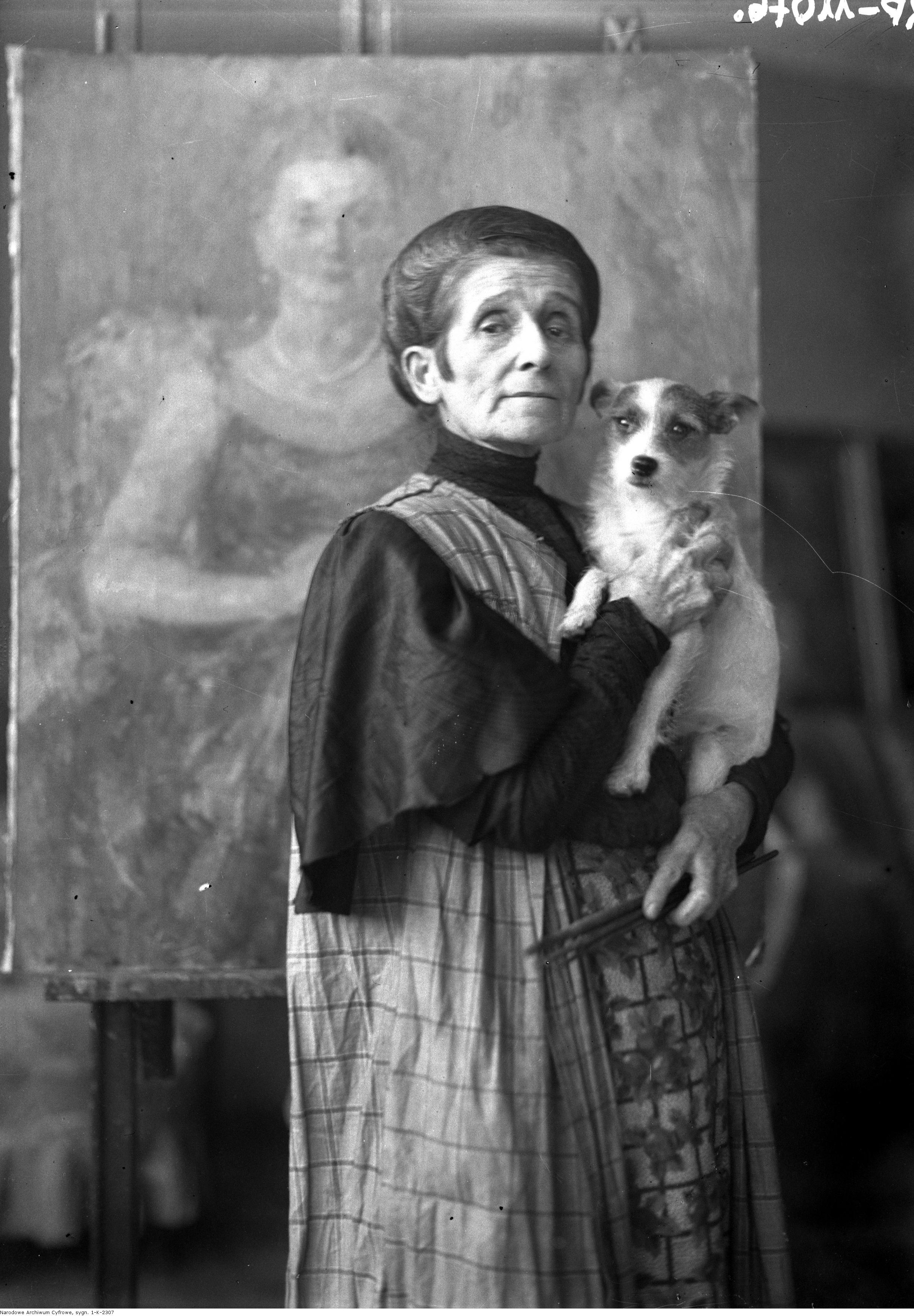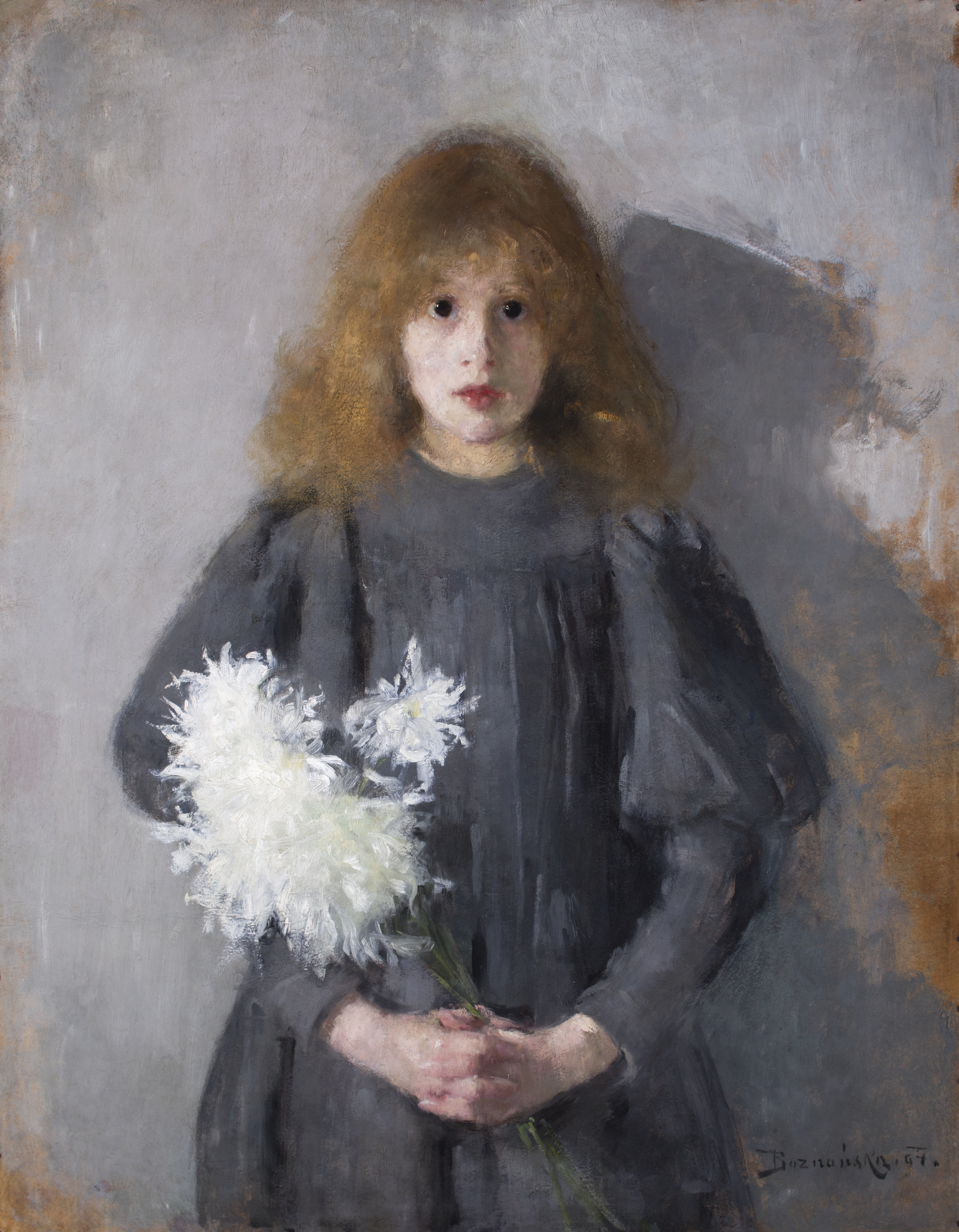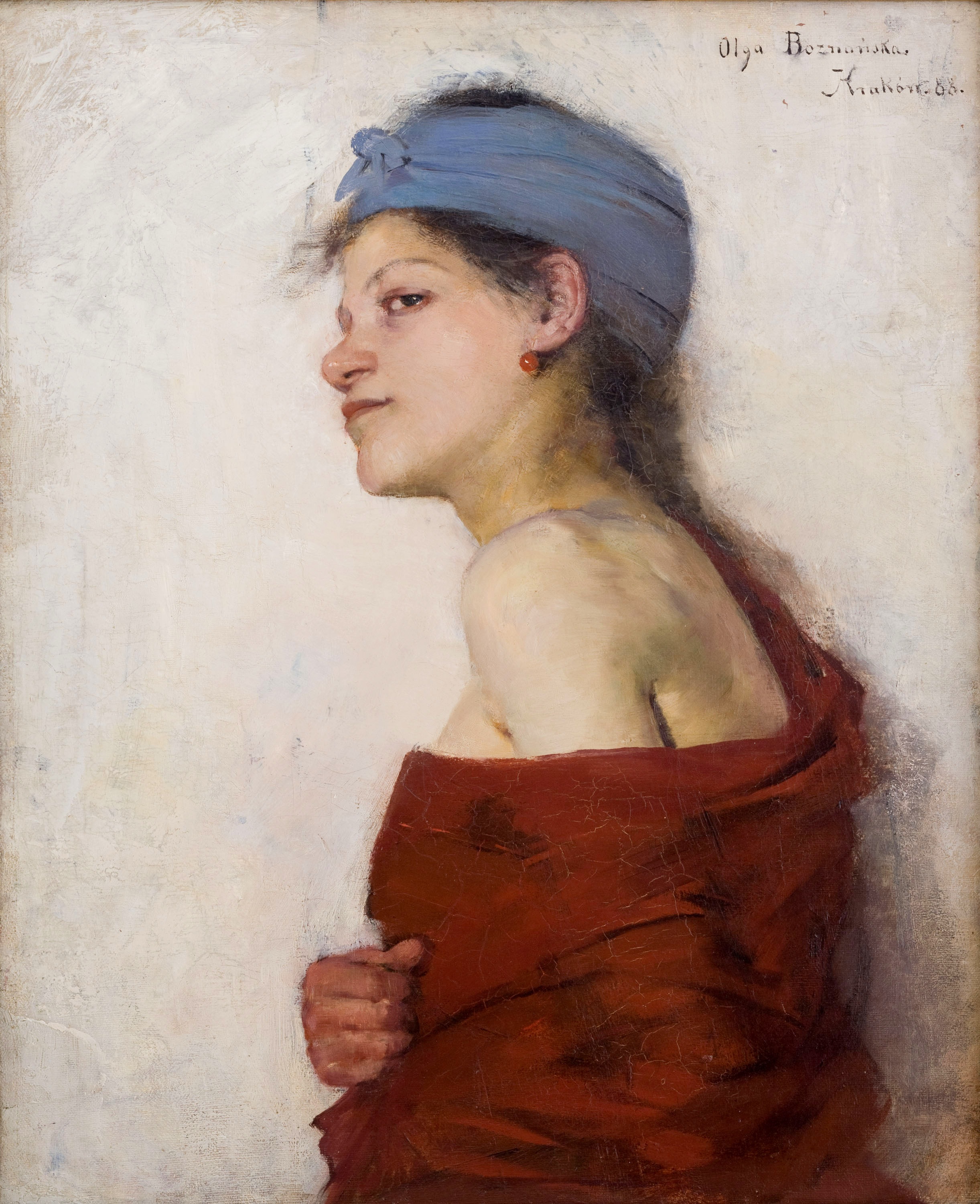Olga Boznańska – Polish Patron of 2025
The designation of 2025 as the Year of Olga Boznańska invites renewed reflection on an artist whose oeuvre transcends aesthetic categories and enters the realm of cultural memory. Boznańska (1865–1940), often described as one of the most important women painters at the turn of the century, created a body of work that captures the psychological depth of individuals living in a Europe on the threshold of profound historical transformation. Her portraits, enveloped in subdued light and a muted palette, form a unique visual archive of a continent whose cultural landscapes, social structures, and interwoven identities would soon be irrevocably altered by the catastrophes of the 20th century.
Boznańska lived and worked across multiple cultural centres – Kraków, Munich, and Paris – moving within transnational artistic networks characteristic of late 19th-century Europe. This mobility shaped the cosmopolitan character of her work and situates her firmly within what today we might call a Central European cultural constellation: multilingual, diverse, steeped in both local particularities and transboundary exchanges. Her milieu was a Europe before ruptures, before mass displacement, before the political and ideological divisions that would define the decades after her death. In this sense, Boznańska becomes not merely a portraitist, but a chronicler of a vanished Europe, one whose atmosphere, sensibilities, and tensions can still be traced on her canvases.
Art historians have long noted that Boznańska’s portraits rarely aim at realistic representation. Instead, they evoke a psychological state – an interiority marked by introspection, fragility, and an acute awareness of time passing. Her sitters, often depicted in quiet contemplation, appear suspended between presence and absence. As Agnieszka Karpowicz argues, Boznańska “renders memory not as a static record but as a living, vibrating tension between what is and what is no longer” [Karpowicz, 2018].
This approach aligns with the very idea of memory central to the work of the European Network Remembrance and Solidarity: memory as a process, as an interpretative act shaped by emotion, vulnerability, and shifting cultural contexts. The individuals Boznańska painted – intellectuals, children, anonymous figures – become carriers of larger historical narratives. Although her works predate the devastations of the First and Second World Wars, they seem imbued with a faint premonition of loss. Many art historians have noted that her muted palette – dominated by greys, greens, and earth tones – echoes the atmosphere of uncertainty and transition characteristic of fin-de-siècle Europe.
Her famous Girl with Chrysanthemums (1894) exemplifies this. The child’s gaze is neither naïve nor serene; it is contemplative, unsettlingly mature. The painting has often been read as a metaphor for the fragility of European childhood on the brink of the age of war. The historian Piotr Piotrowski suggested that “Boznańska paints the moment before history breaks in – a threshold image, trembling with the tension between innocence and catastrophe” [Piotrowski, 2009].
Boznańska’s oeuvre also enriches the discourse on women’s history in Europe – a subject increasingly recognised as essential to understanding the 20th century. As Linda Nochlin famously argued, women artists of Boznańska’s generation navigated structural barriers that shaped not only their careers but also their modes of expression [Nochlin, 1971]. Boznańska’s quiet, introspective style may thus be read as an artistic strategy forged in a male-dominated world: her paintings resist monumental heroism, favouring instead the intimate space of human vulnerability.
This subtlety becomes significant in contemporary debates on remembrance. If the 20th century is often narrated through wars, heroism, political ruptures, and large-scale tragedy, Boznańska reminds us of the quieter histories: the everyday emotions, private worlds, and fragile human bonds that endure even through periods of crisis. Her work broadens the scope of what is worth remembering, offering a counter-narrative to the traditional, male-encoded models of historical commemoration.
Living outside Poland for most of her adult life, Boznańska became part of the intellectual and artistic fabric of Western Europe, particularly in Paris, where she spent over four decades. In this sense, her biography mirrors the trajectories of countless Central Europeans – artists, writers, scientists – whose mobility shaped the cultural dynamics of the continent. Her studio in Paris was itself a microcosm of transnational exchange, visited by artists from Poland, France, Germany, and beyond.
This mobility, however, was not a simple narrative of success. Boznańska’s letters reveal the emotional cost of living “in between” – between languages, between cultures, often in poverty, frequently in solitude. These tensions resonate with contemporary discussions on migration, belonging, and identity – areas central to the work of ENRS, which emphasises the need to understand the cross-border entanglements of European histories.
Boznańska’s life thus provides an entry point for reflecting on the broader historical processes – from the fall of empires to the redrawing of borders – that shaped the 20th century. Her art, in turn, visualises the psychological landscape of individuals negotiating these transformations.
To consider Boznańska’s portraits through the lens of memory studies is to recognise them as complex documents of a culture in transition. Portraiture – often dismissed as a traditional genre – becomes, in her hands, a tool for capturing the nuances of identity, social atmosphere, and emotional climate that written sources cannot fully convey. Her sitters are not idealised; they are marked by ambiguity, introspection, and a subtle sense of estrangement. These qualities mirror the experience of modernity itself, with its feelings of dislocation and fragmentation.
Boznańska’s work offers an opportunity to think about how artistic expression contributes to understanding the past. Her paintings remind us that remembrance is not merely about facts or events, but also about the affective undercurrents – fear, hope, longing, vulnerability – that shape human experience.
In an era marked by rapid change, tensions surrounding identity, and renewed debates about the meaning of European unity, Boznańska’s art offers a valuable lens through which to view the continent’s cultural heritage. Her portraits – neither purely Polish, nor fully French, nor tied to a single national tradition – speak a universal language of introspection and empathy. They show individuals situated within, yet slightly detached from, their social surroundings – much like Europe itself, perpetually negotiating the relationship between the familiar and the foreign.
Boznańska’s legacy thus enriches contemporary discussions about what it means to remember, to belong, and to carry the heritage of a century marked by both artistic brilliance and unprecedented destruction. Celebrating her in 2025 is not only an act of homage, but an invitation to reflect on the fragile beauty of a Europe that once was – and the responsibility we bear to preserve the memory of those worlds that have faded.
References:
Bal, Mieke. Acts of Memory: Cultural Recall in the Present. Princeton University Press, 1999.
Boznańska, Olga. Letters and Correspondence (various editions).
Karpowicz, Agnieszka. Czas, pamięć i obraz w sztuce Olgi Boznańskiej. Kraków: Universitas, 2018.
Nochlin, Linda. “Why Have There Been No Great Women Artists?” Art News, 1971.
Piotrowski, Piotr. In the Shadow of Yalta: Art and the Avant-garde in Eastern Europe. Reaktion Books, 2009.
Sieradzka, Anna. Olga Boznańska. Warszawa: Arkady, 2015.
Young, James E. The Texture of Memory. Yale University Press, 1993.





